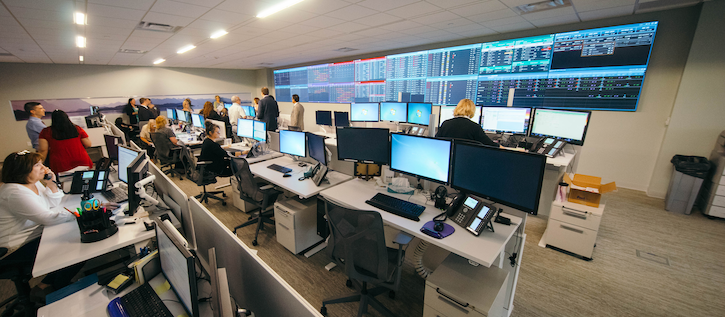CHI Franciscan Launches AI-Powered Mission Control Center to Improve Patient Care
Mission Control could help improve health system inefficiencies to improve patient outcomes.

Photo/Thumb have been modified. Courtesy of CHI Franciscan.
With the help of GE Healthcare, CHI Franciscan announced the launch of its Mission Control Center, which aims to harness artificial intelligence (AI) and advanced analytics to coordinate patient and resources across the health system.
Forecasted demand, facility transfers, the progression of a patient’s care and other factors will help staff make the best decisions to improve delivery and outcomes, said the health system.
“As the region continues to grow, we are constantly finding innovative solutions to increase access to our premier caregivers and services for our communities,” said Ketul Patel, CEO of CHI Franciscan, a non-profit health system based in Tacoma, Washington. “Our new Mission Control Center will complement the work of our care teams to increase access and ensure the highest quality care and experience is provided to our patients and families.”
Core functions of the Mission Control Center include:
- Transferring patients between and from outside the facility
- Placing patients in the appropriate bed the first time
- Chasing down care delays to eliminate them
- Providing appropriate staffing across all facilities
CHI Franciscan is comprised of nine inpatient facilities and approximately 1,300 beds.
“To have a clinical command center that coordinates the care delivery across all nine of those facilities is really something that sets us apart from other health systems,” said Matthew Metsker, division director of Mission Control.
Jeff Terry, MBA, CEO of hospital command centers for GE Healthcare Partners, told Inside Digital Health™ that its role in this collaboration was to develop the design of the physical command center, create AI apps called tiles, figure out who is going to work there and to develop, rehearse and implement actions that will actually happen.
Terry said that CHI Franciscan has 12 tiles displayed on the command center. The tiles can be viewed on a PC or smartphone.
For example, one tile, called Care Progression, scans and detects care activities failling behind schedule, he said. The tile prompts a response without delay and helps to avoid false alarms before alerting the staff.
The tiles update constantly in real-time, Terry said, which makes this command center stand out from others.
Mission Control will analyze real-time data and address potential delays to reduce the amount of time a patient waits in the emergency department or a post-anesthesia care unit for a bed to be available. The center will also use AI to predict patient census levels one and two days in advance with accuracy, CHI Franciscan said. This can help the health system fill anticipated staffing gaps to ensure patients are being cared for by the proper care teams.
Staff at the center will use real-time data and analytics to track patients throughout their hospital journey. The data will help staff identify possible care delays to reduce wait time and prioritize tests and procedures to get patients home more quickly.
“With available healthcare information and advance in data protection and governance, researchers and physician can now make data-driven, actionable and personalized care recommendations,” said Neil Jordan, general manager of Health Industry at Microsoft. “Working with organizations such as CHI Franciscan and GE Healthcare is accelerating innovation with advanced technologies like AI, driving excellence in healthcare delivery and improving operational efficiencies across the healthcare ecosystem.”
CHI Franciscan is not the only health system with a Mission Control — others include Johns Hopkins and Oregon Health Sciences University. But Terry said health systems could all benefit from something like this because it improves quality, efficiency and reduce costs and staff fatigue.
In the future, Mission Control could be expanded to focus on observation patient management, discharge planning, post-acute care planning, surgical flow and census forecasting.
Get the best insights in digital health directly to your inbox.
Related
Mount Sinai and Hasso Plattner Institute Launch Digital Health Institute